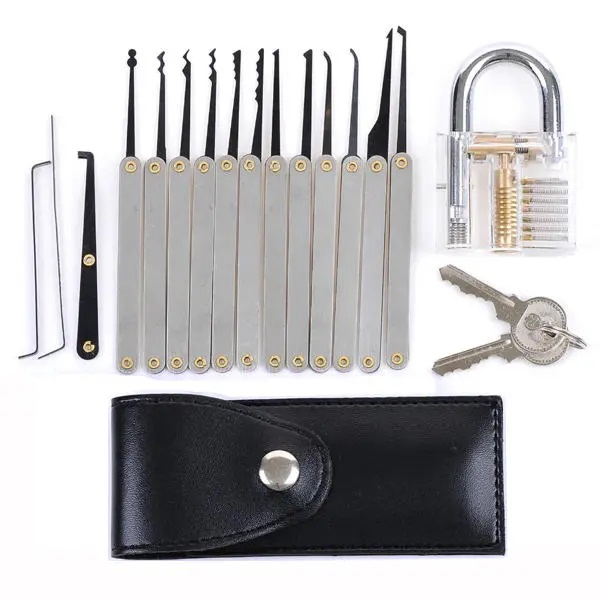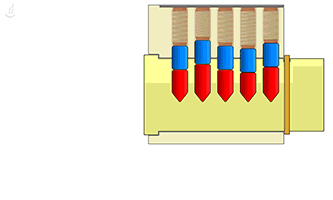Learning Lock Picking
Ever wanted to be able to pick locks? I certainly did, which is why I learned how to do it! Explaining how I first started and how it works. 2020-07-24
A Long Journey...
For a few years now, I've been lock picking (if you can even call it that) small padlocks with paper clips and hairpins. I used pliers to create tools by bending them in specific places, which I then used to open very small locks. However, a few months ago, I got fed up of DIY tools that kept bending and breaking. After a bit of shopping, I found a perfect beginner kit on Banggood, which was even recommended by the lock picking god (also known as The LockPickingLawyer) in a video of his. It looks a bit like this:

According to The LockPickingLawyer, the only downside of this kit was the tension wrenches, which bent really easily. Fortunately, it turned out that the one I ordered was a bit different, so I ended up receiving thick metal tension wrenches with my lock picking kit instead of the low-quality ones he got.
How Lock Picking Works
Lock picking is very simple in principle, but very hard in practice. In order to pick locks, you need two basic items:
- A tension wrench, used to put tension on and turn the core
- A pick, used to manipulate the pins of the lock
There are many types of picks, but they can be organized in two basic categories: rake picks (used to manipulate all the pins at once) and hook picks (used to set one pin at a time). It is a bit tricky to explain how they work together to open locks, so here is an awesome animation showing off single-pin picking:

In this animation, the tension wrench is the L-shaped tool on the bottom, and the pick is the curved tool on the top. In essence, because of tiny manufacturing defects in the lock, only a single pin at a time is receiving all the torque created by the tension wrench (represented by an orange zigzag line in the animation). It just a matter of finding that pin, then lifting it to the right height until it clicks, and moving on to the next one. After every pin clears the shear line, nothing is holding the core from turning and the lock opens!
...And Still a Long Way to Go
After a few hours of practice, I opened the door of my house for the first time. To be honest, this first attempt was just lock (sorry, I had to). I continued practicing for a bit more, and after about a few minutes, I opened it again... and then seconds later, again... and again... and again. I am now able to feel if I have overset a pin or if I have set it correctly, and I am not just waving my pick around anymore. However, I do still find it hard to open different locks, which need different amounts of tension, and skill. I still have a long way to go before being able to call myself a lock picking expert...